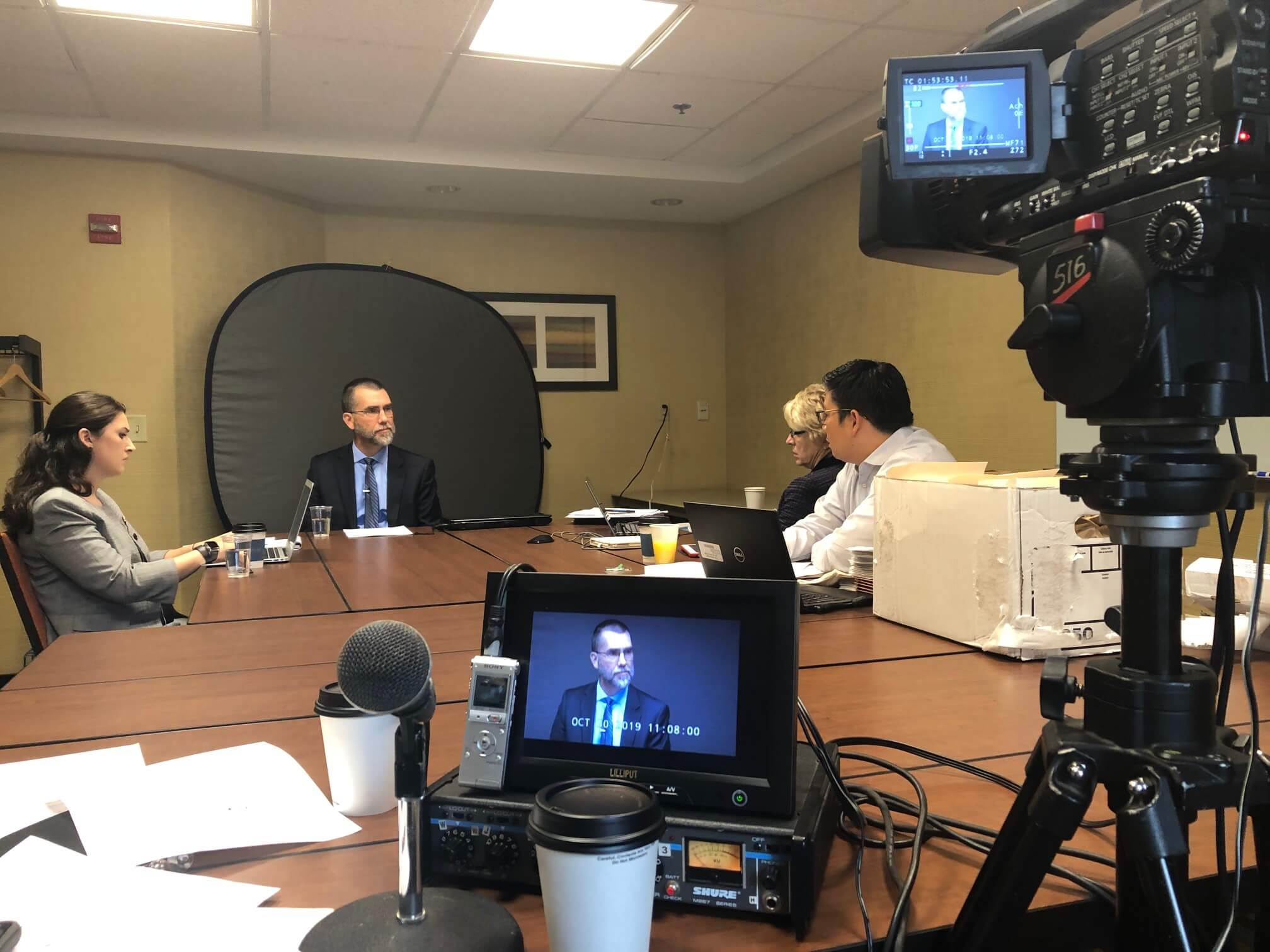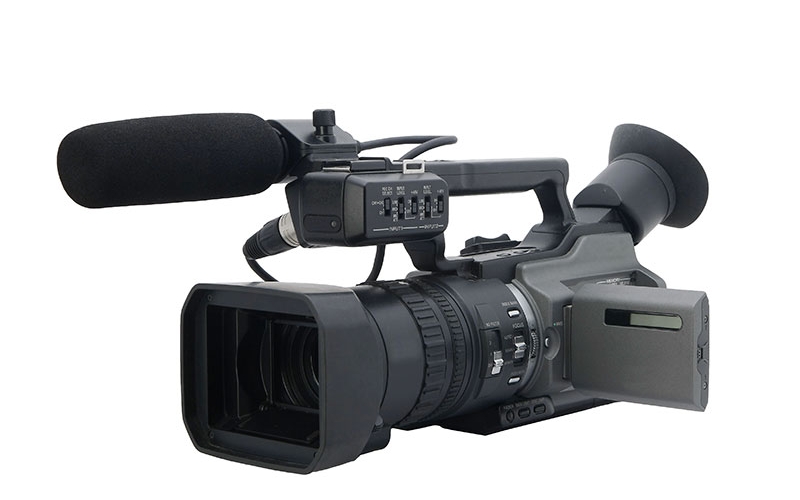Legal Videography: Changing the Way Evidence is Recorded and Presented
Wiki Article
Looking Into the Mechanisms of Legal Videography: Unveiling Its Procedure in Safeguarding Genuine Aesthetic Testament for Judicial Process
In the realm of judicial proceedings, the duty of legal videography stands as a cornerstone in protecting and offering aesthetic proof. As innovation remains to development, the devices behind legal videography have come to be increasingly intricate, providing an essential layer of authenticity to testaments recorded on video clip. By delving into the operational complexities of lawful videography, one can discover the precise processes that guard the honesty of visual evidence presented in courts - Legal Videography. This exploration not only loses light on the historic advancement of lawful videography yet also hints at the future fads that might better reinvent exactly how visual testimonies are upheld in the world of justice.Historical Evolution of Legal Videography
Analyzing the historical development of lawful videography discloses a considerable improvement in the catching and presentation of visual evidence within the legal landscape. In the past, lawful procedures heavily counted on composed photographs and transcripts to document occasions and give evidence. However, with the development of video technology, the legal market observed a standard change in just how aesthetic testament was captured and presented.The advancement of lawful videography can be mapped back to the late 20th century when developments in video clip recording equipment made it a lot more easily accessible for use in courts. This technological innovation not just boosted the precision and dependability of aesthetic proof but also reinvented the method situations were provided to discretionary (Legal Videography). Lawyers began to recognize the persuasive power of video clip recordings in sharing feelings, nuances, and non-verbal hints that written records or photos alone can not capture efficiently

Modern Technology Developments in Video Clip Paperwork
What key technical developments have revolutionized video paperwork in the lawful field? The lawful field has actually seen significant improvements in video clip paperwork technology that have enhanced the authenticity and integrity of visual proof in judicial proceedings.Moreover, advancements in video file encryption and watermarking modern technologies have strengthened the safety and tamper-proof nature of video clip evidence, protecting it versus unapproved alterations or meddling. The introduction of cloud storage services and remote accessibility capabilities has streamlined the storage, retrieval, and sharing of video clip evidence, assisting in seamless collaboration amongst legal experts and guaranteeing effective access to critical aesthetic testaments when required. These technological innovations in video clip documents have definitely transformed the lawful area, boosting the precision, credibility, and admissibility of visual proof in judicial process.
Role of Lawful Videographers in Court Settings
The development of video clip documentation innovation in the legal field has required a critical duty for lawful videographers in courtroom settings, ensuring the integrity and dependability of aesthetic statements offered during judicial procedures. Lawful videographers play a fundamental role in recording and protecting accurate aesthetic proof that can be crucial in litigation. Their duty encompasses establishing up tools, recording procedures, and generating top notch video clips that properly mirror the occasions in the courtroom.
In addition, lawful videographers typically work very closely with lawful teams to make sure that the video proof lines up with the situation's requirements and can be properly provided in court to sustain the lawful disagreements being made. Generally, the function of legal videographers in court setups is crucial in supporting the principles of justice and ensuring the openness of lawful proceedings. Legal Videography.

Ensuring Admissibility and Honesty of Video Evidence
To maintain the trustworthiness of aesthetic evidence offered in lawful proceedings, making sure the admissibility and integrity of video proof is a crucial obligation for legal videographers. Admissibility refers to the acceptance of proof by the court, and for video evidence to be admissible, it must meet specific requirements. Lawful videographers play a vital duty in guaranteeing that the video clips they record abide by the policies of proof, such as authenticity, relevance, and reliability.Stability of video evidence involves maintaining the creativity and precision of the footage from the time it is tape-recorded until it exists in court. This includes firmly saving the video clip files, documenting the chain of custodianship, and protecting against any type of meddling or changes. Legal videographers have to follow stringent procedures to ensure the honesty of the video clip evidence and avoid any type of obstacles to its authenticity.
Future Trends in Legal Videography
Offered the increasing dependence on innovation in legal process, legal videographers are positioned to welcome cutting-edge improvements shaping the future of visual statement capture and presentation. One of the famous fads on the horizon is the combination of virtual reality (VR) and published here boosted truth (AR) modern technologies right into lawful videography. These technologies have the prospective to change just how aesthetic evidence is offered in courtrooms, permitting juries and judges to immerse themselves in the scene of the crime or case.In addition, making use of fabricated intelligence (AI) algorithms for click this site video clip evaluation is expected to enhance the process of assessing and assessing large quantities of video clip footage. AI can assist in determining vital moments, abnormalities, and patterns within videos, enhancing the performance of legal examinations.

Final Thought
To conclude, lawful videography has played a vital role in providing authentic aesthetic evidence for judicial procedures. Through technological improvements and the knowledge of legal videographers, the honesty and admissibility of video clip proof are made sure in court setups. As lawful videography continues to evolve, it will certainly be important to support criteria that keep the precision and dependability of visual statement for the future of lawful procedures.Examining the historical development of legal videography reveals a substantial change in the catching and discussion of visual proof within the legal landscape.The development of video documents modern technology in the legal area has demanded an essential role for legal videographers in courtroom setups, ensuring the stability and reliability of aesthetic that site testaments offered during judicial process. Additionally, lawful videographers often function carefully with legal groups to make sure that the video evidence lines up with the situation's demands and can be efficiently offered in court to sustain the legal arguments being made.To preserve the reputation of visual evidence provided in lawful proceedings, making certain the admissibility and honesty of video clip evidence is a vital duty for lawful videographers. As legal videography proceeds to advance, it will be vital to maintain criteria that maintain the precision and reliability of visual statement for the future of legal proceedings.
Report this wiki page